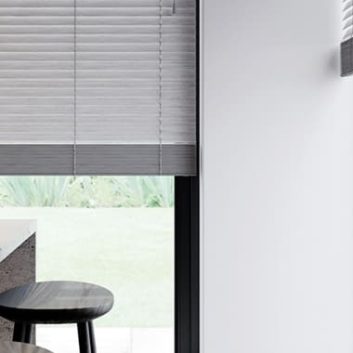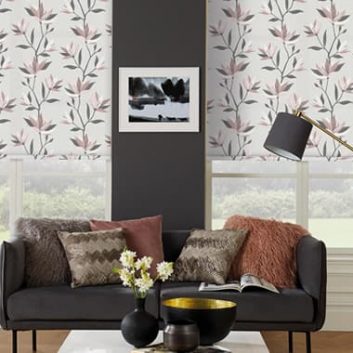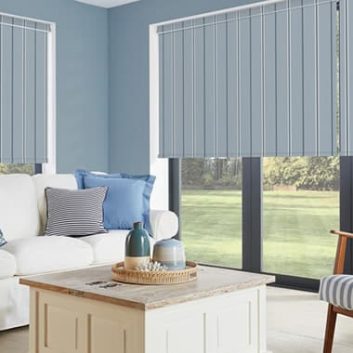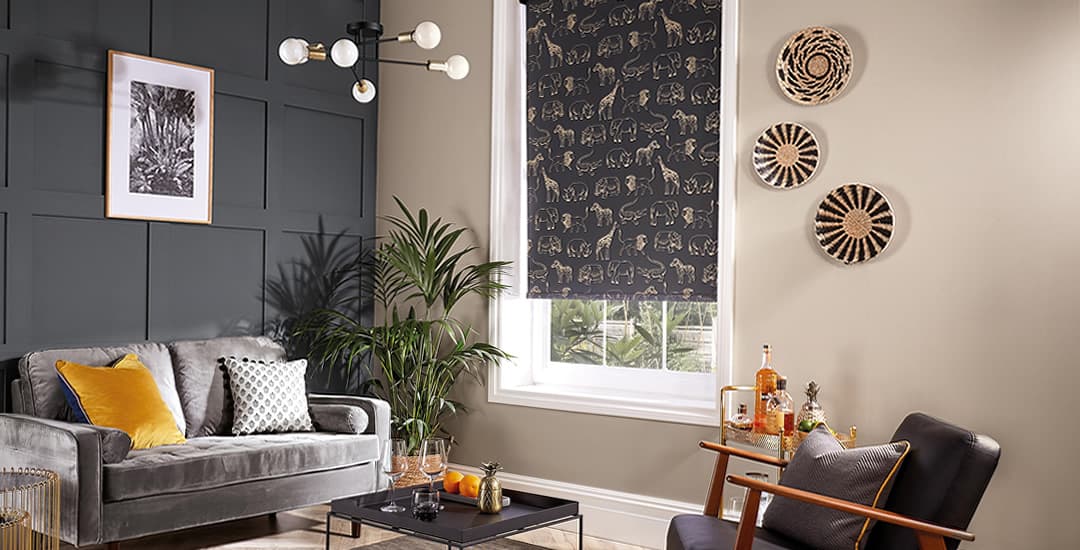
Black is definitely a very bold colour choice for window blinds, which I think is funny given that black dresses are considered to be a wardrobe staple rather than the last word in envelope-pushing “is it edgy or is it dodgy” fashion sense.
But why choose black blinds, and what sort of rooms work well with them? If you’re finding it hard to visualise black blinds in a room, or the styles they might work with, or if you’re working with the seed of an idea that black blinds might be the way to go but you want to ensure you don’t end up regretting the whole thing in short order, this blog post is for you.
I’ll start with giving a little context for the use of black blinds for various different practical purposes and environments, and provide some style pointers for using black blinds too.
Why choose black blinds for colder rooms?
Looking first at a logistical/practical consideration here, do you remember in high school science class being taught that black absorbs and holds onto heat more effectively than lighter colours? I do, largely because it made me feel sorrier for our black Labrador during the summer than I did our yellow one when they both melted into dog-shaped puddles on the coolest part of the kitchen floor…
Anyway, colours can quite literally impact on the physical temperature of a room in terms of what they do with the heat they are exposed to, and black blinds will potentially hold heat to a slightly greater degree than blinds of other colours, so if your room is Baltic and black will either work within the room’s theme or “surviving winter” pretty much is your theme, consider a black blind.
Are blackout blinds black, and are black blinds blackout blinds?
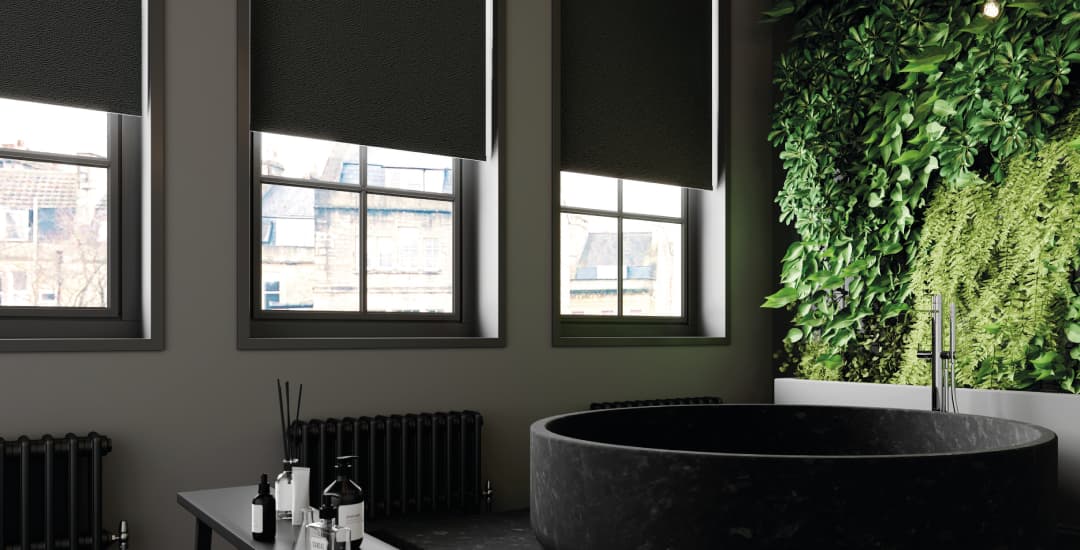
I think I just did a “red lorry, yellow lorry” kind of thing there, didn’t I?
Anyway, I’m just going to throw this one out here while we’re on the topic of black blinds, because this question comes up a lot and/or many people assume that blackout blinds are black/lined with black fabric; and/or that black blinds are by default, blackout blinds.
Neither of these things are true. Most blackout blind linings/coatings are white or light-coloured by default. Black blinds in and of themselves are not automatically blackout blinds either.
For instance, you could buy say, a black roller blind made of a thinner fabric that will definitely let some level of light in; unless it’s made as a blackout blind, it is not automatically going to possess this power just because it’s black in colour.
What type of blinds can be black?
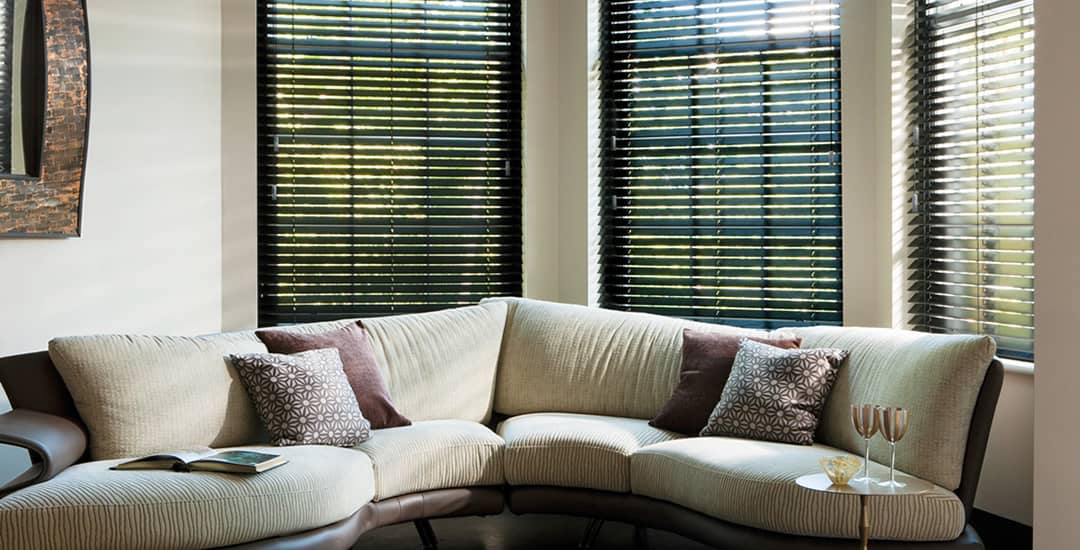
In terms of blinds types then, what might be your options if you’re looking for black blinds? Any of them. All of the main types of blinds can be black; either due to the colour of the fabric they’re made from (for blinds like roller blinds, vertical blinds, or Roman blinds) or because they’re finished in black for other types of blinds.
Aluminium Venetian blinds, wooden blinds, and faux-wood blinds alike can all be painted or finished in black, sometimes with options for textures and gloss/matt/satin finishing too.
Finally, day and night blinds; these are the type of blinds that are made of horizontal stripes constructed of two different fabric types, one being sheer and the other opaque.
The opaque part of a day and night blind can be black, while the sheer stripe will always be a lighter colour; like day and night, if you will… But if you align the stripes into a solid colour block, they can and do indeed form a sheet of sheer black fabric.
Why choose black blinds for certain themes or styles?
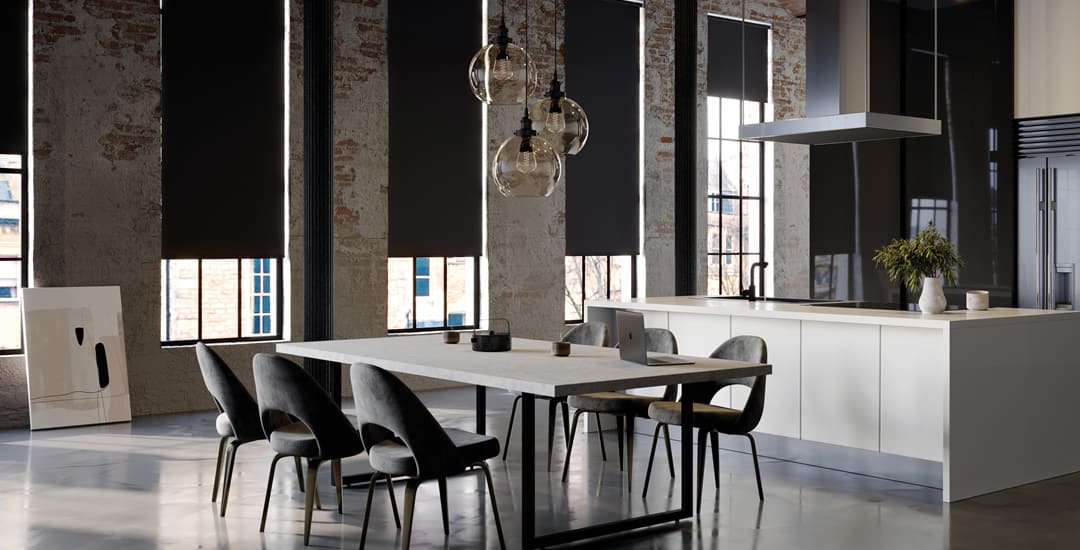
Some styles, lifestyles, and so on very obviously come with black blinds as a serious contender in the colour stakes; I am indeed lazy enough to say “Goths;” also those that are into (or actually are) vampires. Opulent boudoir themes also often involve a lot of black (particularly velvet and other very tactile fabrics) as can medieval and other period-themed rooms.
Even people who need a neutral space perhaps to help to disengage when stressed, and to reduce or mute external stimulus (which can be really important for people on the autistic spectrum) but that find white and light colours too jarring or bright often get on well with black blinds too.
Minimalistic and also futuristic rooms both work well with black blinds, both of which tend to involve a strong base neutral colour (such as white) with a bold accent or contrasting colour; which could well be black.
Black accessories and so on are also pretty hot at present in general; black bathmats, ornaments and so on are now found among all the other usual colour choices, which would not have been the case a decade ago.
Black gloss tiles, lots of shiny chrome, and black blinds create a really strong and luxurious look for a bathroom, as does plum with black for kitchens.
Black in bedrooms is often really showstopping too (and not in the “dungeon” type of way) when there is a lot of opulence in play with textures as well as colours; velvet, silk, plush accents, and other rich, warm shades like deep red, deep blue, or gold detailing.
Any or all of these looks/ideas, when you can envision them in your head, self-evidently look great with black blinds.
Finally, gaming rooms or viewing rooms (for those of you with TVs that cost more than my car, largely) might call for black blinds too, to help to produce a conducive atmosphere to your show-watching or dragon-slaying agenda.

